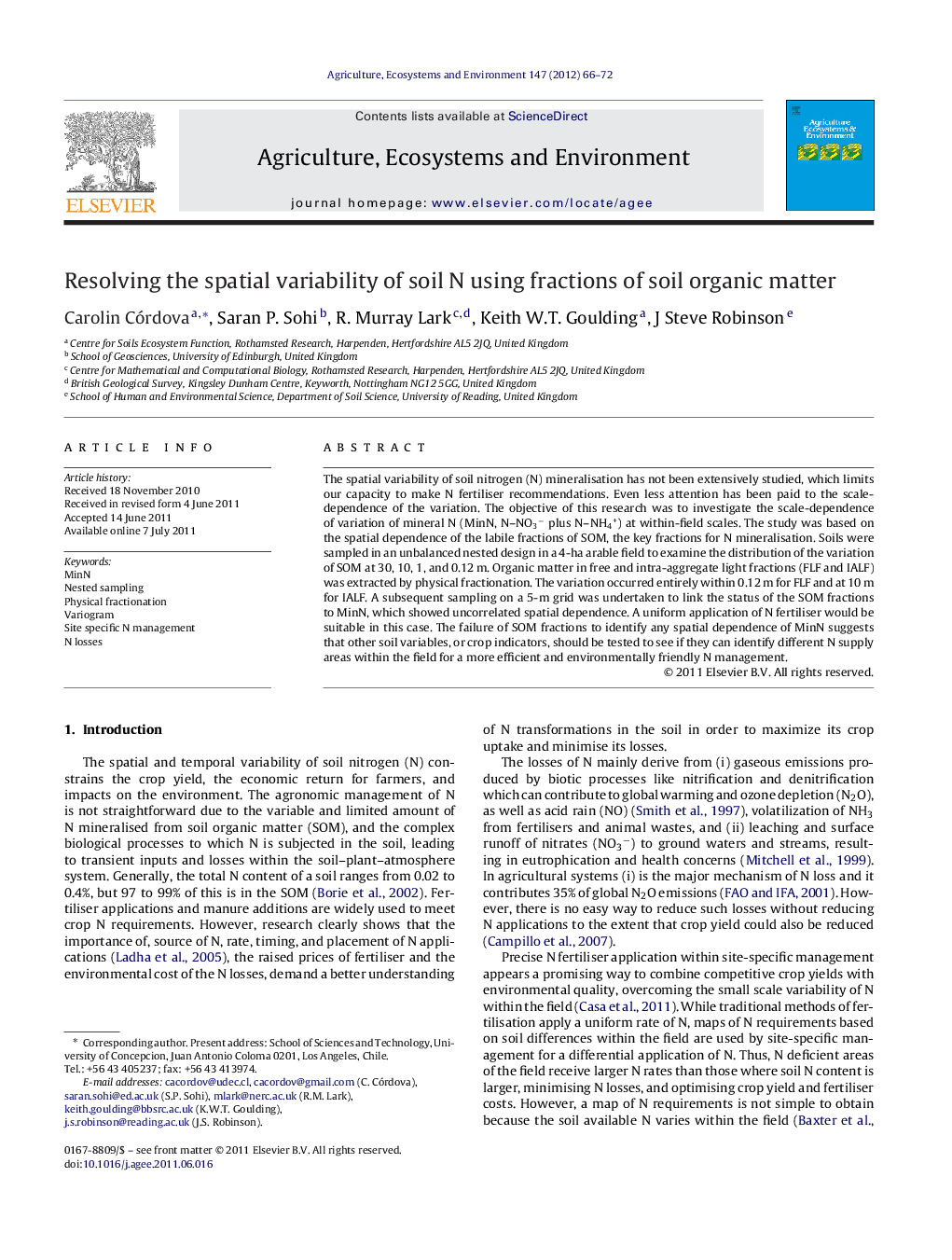| کد مقاله | کد نشریه | سال انتشار | مقاله انگلیسی | نسخه تمام متن |
|---|---|---|---|---|
| 2414618 | 1552105 | 2012 | 7 صفحه PDF | دانلود رایگان |

The spatial variability of soil nitrogen (N) mineralisation has not been extensively studied, which limits our capacity to make N fertiliser recommendations. Even less attention has been paid to the scale-dependence of the variation. The objective of this research was to investigate the scale-dependence of variation of mineral N (MinN, N–NO3− plus N–NH4+) at within-field scales. The study was based on the spatial dependence of the labile fractions of SOM, the key fractions for N mineralisation. Soils were sampled in an unbalanced nested design in a 4-ha arable field to examine the distribution of the variation of SOM at 30, 10, 1, and 0.12 m. Organic matter in free and intra-aggregate light fractions (FLF and IALF) was extracted by physical fractionation. The variation occurred entirely within 0.12 m for FLF and at 10 m for IALF. A subsequent sampling on a 5-m grid was undertaken to link the status of the SOM fractions to MinN, which showed uncorrelated spatial dependence. A uniform application of N fertiliser would be suitable in this case. The failure of SOM fractions to identify any spatial dependence of MinN suggests that other soil variables, or crop indicators, should be tested to see if they can identify different N supply areas within the field for a more efficient and environmentally friendly N management.
► We used the scale dependence of the light fractions of the soil organic matter to examine the spatial variation of mineral N at the within field scale.
► The free and intra-aggregates light fractions were assumed to have a key role in N mineralisation and therefore on mineral N, and therefore on N recommendations. Thus, a rational N management based on the identification of differential areas would allow specific N management, reducing N losses and optimising crop yield.
► We computed variograms from spatially distributed data and we found that mineral N showed uncorrelated spatial variation across the field.
► We conclude that the light fractions of the soil organic matter were not useful to predict the spatial variability of N at this scale, making impossible the detection of different areas for application of site specific N management.
Journal: Agriculture, Ecosystems & Environment - Volume 147, 15 January 2012, Pages 66–72